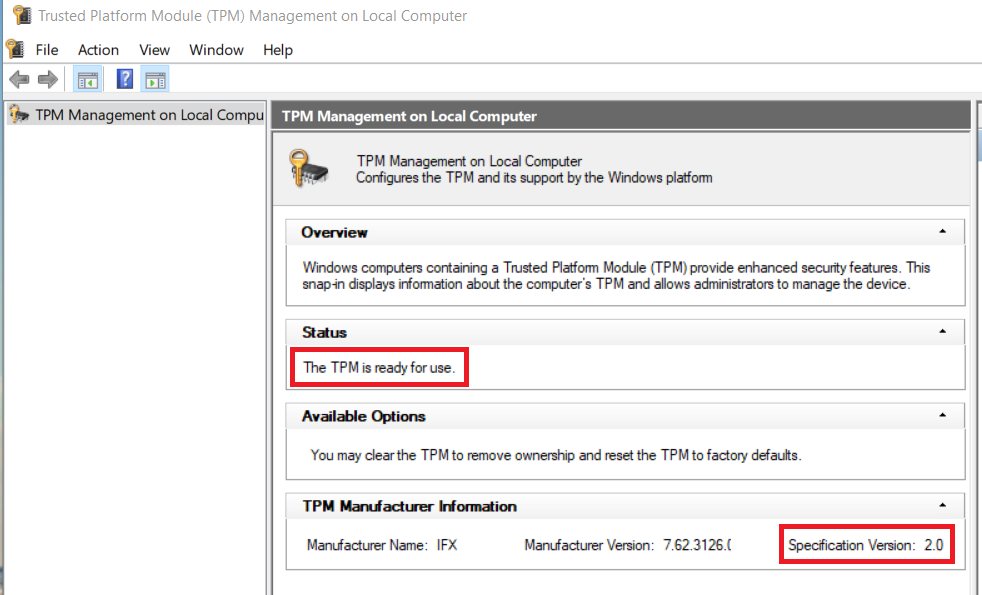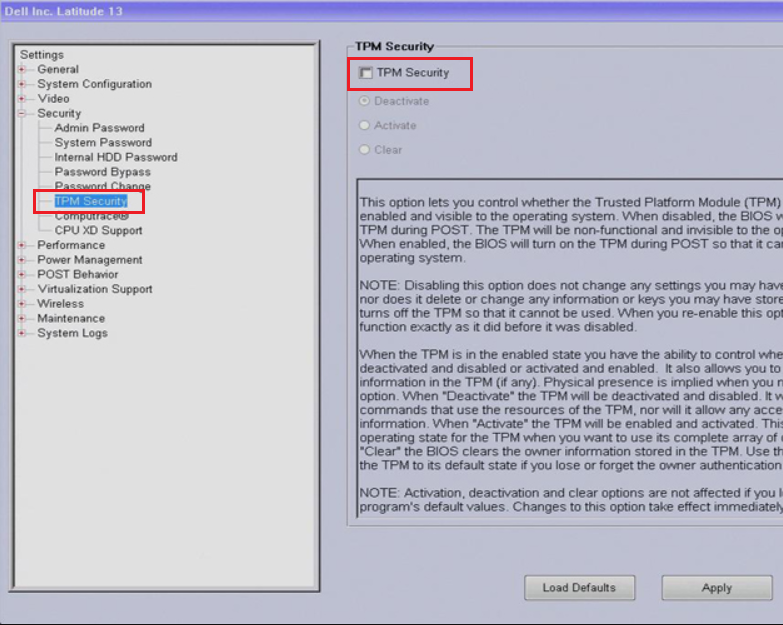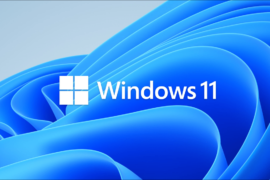This post shows students and new users the steps to enable TPM 2.0 (Trusted Platform Module) so that your PC is compatible to install and run Windows 11 and also download and install all Windows updates.
Microsoft established some basic requirements to install Windows 11. One of these requirements is to have TPM 2.0 enabled in your UEFI / BIOS system. If your system motherboard supports TPM 2.0 but is not enabled, you must do so through UEFI / BIOS if you want to upgrade to Windows 11 or continue to receive Windows 11 updates and support from Microsoft.
TPM is a security technology that increases system security against software vulnerabilities. TPM enables the use of these Windows features, including BitLocker Drive Encryption, Data Execution Prevention, Windows Hello, Secure Boot and Measured Boot, and more.
The TPM 2.0 chip is installed on the motherboard of systems which is used to provide higher security standards and better reliability than the original TPM version and it is also compatible with CPUs that support version 2.0.
With TPM 2.0 enabled, passwords, certificates, or encryption keys that are stored on the chip will prevent access to this sensitive data from hackers’ malware in Windows 11, and that’s why it’s good to have it enabled.
In the following, we will show you how to find out if your PC supports TPM 2.0 and / or how to enable it if not.
How to check if the PC supports TPM 2.0
As mentioned above, one of the requirements of Windows 11 is to have TPM 2.0 enabled and CPUs that support it. The easiest way to find out if your PC supports TPM 2.0 is to run the Windows 11 PC Health Check application.
The application will tell you if your PC is compatible and / or has TPM 2.0 enabled.
If you have an AMD Ryzen 2000 or newer CPU, or an Intel 8000 series or newer CPU, you almost certainly have a processor that supports the TMP 2.0 module. If your CPU supports it, surely your motherboard will have it too.
If you are not sure about the status of your TPM PC, follow the steps below to find out.
Click on the Start , then find and select tpm.msc below Best match, as shown in the picture below.

Click on the application to open it. Once opened, the State the section will show The TPM is ready to use. For Windows 11, the version according to the TPM manufacturer’s information must be 2.0.

Here’s how to find out PC support for TPM 2.0.
If you followed the steps above and found that TPM 2.0 is not enabled, please run the steps below to enable it on your PC.
TPM must be enabled on the system motherboard. To do so, reboot or boot your PC and enter UEFI / BIOS using your motherboard’s key combination to enter your UEFI / BIOS settings.
For most systems, the TPM settings should be located in the Security or Advanced tab. Once you find the setting, switch to enable, then save the changes and exit.

With TPM 2.0 enabled, you should be able to continue installing or upgrading to Windows 11, if all other requirements are met. Alternatively, press Windows key + I to access the Settings app, then select Update and security > Windows security > Device security. Under the Security processor, confirm your Specification version it is 2.0.
You should do that!
Conclusion:
In this tutorial we have seen how to enable TPM 2.0 on Windows 11. If you find any errors above or have something to add, use the comment form below.




